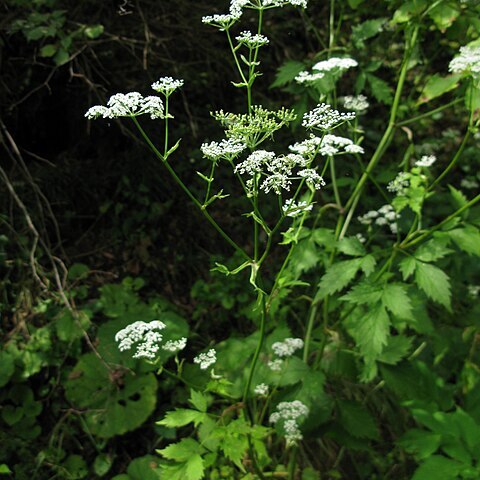Plants 0.5–1.5 m. Root stout, brown, 2–3-branched. Stem ribbed, glabrous or sparsely pubescent. Petioles acute-triangular in cross section, 5–20 cm, sheaths triangular-ovate; leaf blade triangular-ovate, 20–45 × 17–40 cm, 2–3-ternate-pinnate; leaflets subsessile or short-petiolulate, long-ovate to elliptic, 2.5–12 × 1–6 cm, base obliquely cordate to cuneate, margin coarse-toothed or serrate, apex acuminate, glabrous or hispidulous along nerves. Umbels 4–8 cm across; bracts 1–2, narrow-lanceolate; rays 7–13, unequal, scabrous; bracteoles 6–10, linear-lanceolate, unequal; umbellules ca. 20-flowered; pedicels glabrous. Calyx teeth ovate. Petals white, broad-ovate. Fruit ellipsoid, 4–5.5 × 3.5–4 mm; dorsal ribs prominent, lateral ribs broad-winged; vittae 1–3 in each furrow, 4–6(–8) on commissure. Fl. Aug–Sep, fr. Sep–Oct.
More
An erect herb. It keeps growing from year to year. It grows 1 m high. The stems are hollow and branched towards the ends. They have ridges. The leaves both at the base and along the stem are divided 3 times. They are on slender leaf stalks that form sheaths around the stem at the base. The last segments are oval and 3-12 cm long by 2-6 cm wide. They have teeth. The flowers are white and in compound heads 4-8 cm across made up of about 20 flowers. The fruit are 4-6 mm long by 4 mm wide and have ribs and wings.

